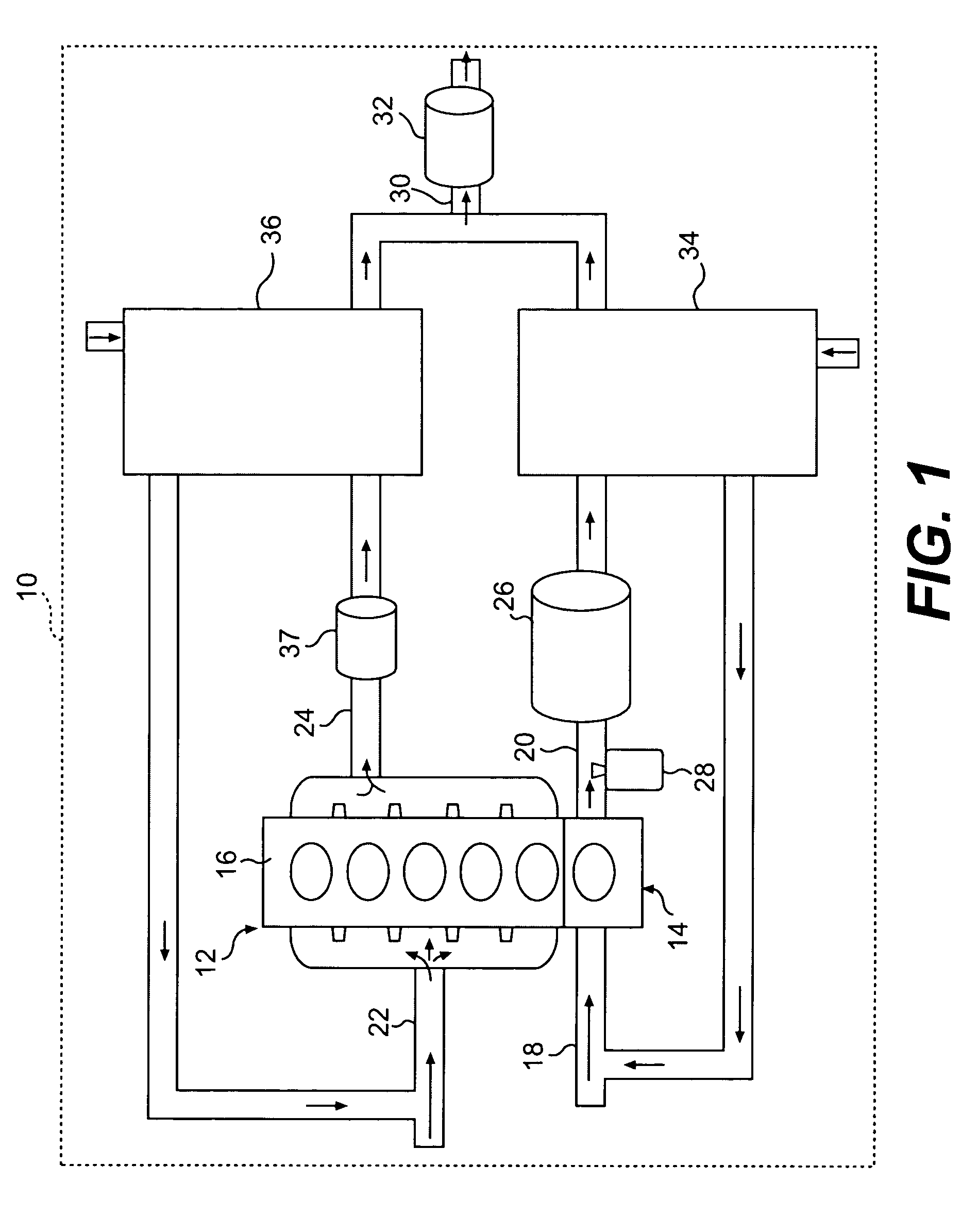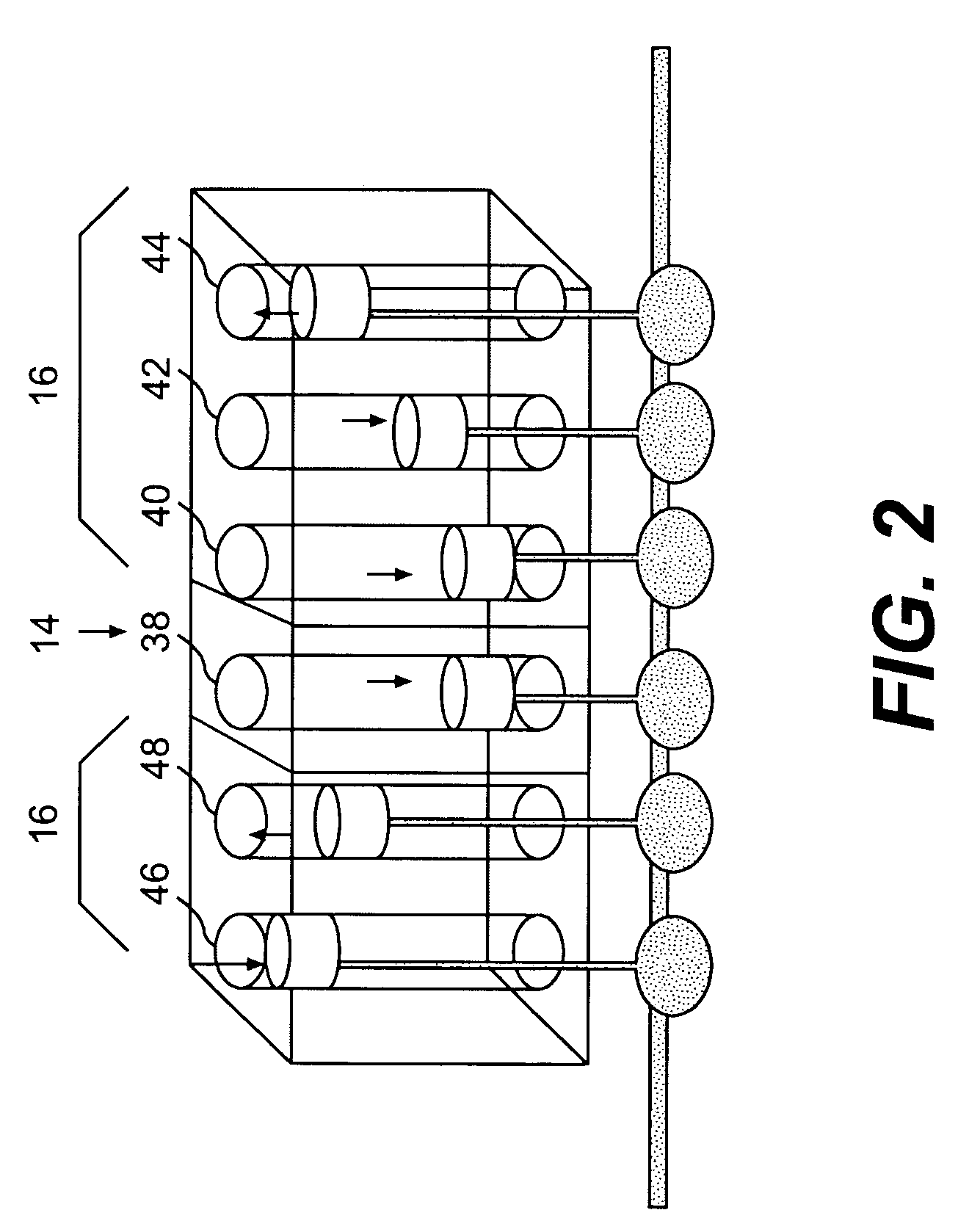Exhaust purification with on-board ammonia production
a technology of ammonia production and exhaust gas, which is applied in the direction of machines/engines, fuels, mechanical equipment, etc., can solve the problems of high cost of ammonia production, hazardous storage of ammonia, and specialized equipmen
- Summary
- Abstract
- Description
- Claims
- Application Information
AI Technical Summary
Benefits of technology
Problems solved by technology
Method used
Image
Examples
Embodiment Construction
[0016]FIG. 1 provides a schematic representation of a work machine 10 of the present disclosure including a power source 12. Power source 12 may include a first cylinder group 14 and a second cylinder group 16. First cylinder group 14 may fluidly communicate with a first air-intake passage 18 and a first exhaust passage 20. Second cylinder group 16 may fluidly communicate with a second air-intake passage 22 and a second exhaust passage 24. In one embodiment, first air-intake passage 18 is fluidly isolated from second air-intake passage 22.
[0017] The operation of engine cylinders may be dependant on the ratio of air to fuel-vapor that is injected into the cylinders during operation. The air to fuel-vapor ratio is often expressed as a lambda value, which is derived from the stoichiometric air to fuel-vapor ratio. The stoichiometric air to fuel-vapor ratio is the chemically correct ratio for combustion to take place. A stoichiometric air to fuel-vapor ratio may be considered to be equ...
PUM
 Login to View More
Login to View More Abstract
Description
Claims
Application Information
 Login to View More
Login to View More - R&D
- Intellectual Property
- Life Sciences
- Materials
- Tech Scout
- Unparalleled Data Quality
- Higher Quality Content
- 60% Fewer Hallucinations
Browse by: Latest US Patents, China's latest patents, Technical Efficacy Thesaurus, Application Domain, Technology Topic, Popular Technical Reports.
© 2025 PatSnap. All rights reserved.Legal|Privacy policy|Modern Slavery Act Transparency Statement|Sitemap|About US| Contact US: help@patsnap.com



